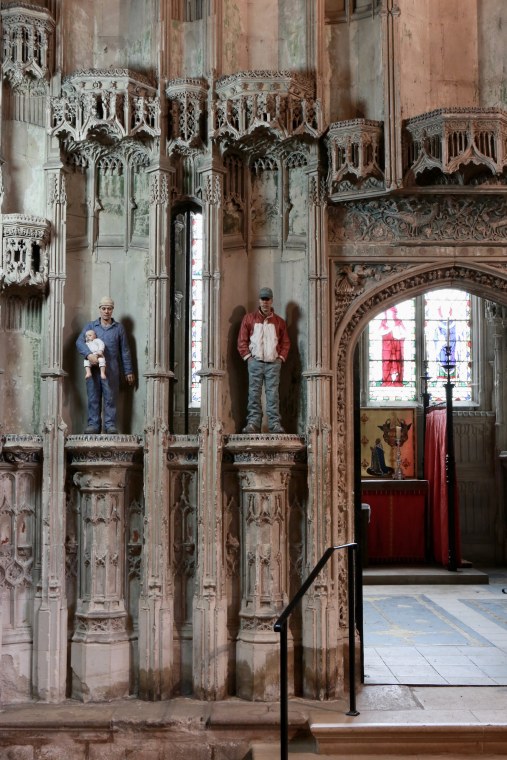An exhibition of 28 sculptures created by Sean Henry is now on show at Ely Cathedral, in a solo exhibition which runs until September 1st. Am I My Brother's Keeper? has been curated by Jacquiline Creswell and includes sculptures that span a 25 year period, and range in scale from 1 to 10 feet in height. Nearly all the works are polychrome, with many occupying original Medieval stone niches within the body of the Cathedral that have remained empty since the iconoclasm of the Reformation in the 16th Century.
Exhibition curator, Jacquiline Creswell says “In a world so often plagued by division and indifference, the question, ‘Am I my brother’s keeper’ can be interpreted as an enquiry into one’s moral responsibility towards others. It prompts reflection on the extent to which individuals should support each other and recognises our interconnectedness and the importance of looking out for one another. Within the context of a sacred space it’s about opening up discussions and fostering a sense of unity and community. Through acts of compassion and understanding, we can move toward creating a world where no one is left behind and everyone has the opportunity to thrive.”
Sean Henry says “I feel very priviledged to be able to exhibit some my sculptures in and around the ancient space of Ely Cathedral and I am grateful for the opportunity. My figurative sculptures, while often inspired by aspects of real people, are rarely portraits and are mostly annoymous. I am more interested in 'how' they are, rather than 'who' they are, with the focus being on what it is to be human."
Visual art is by nature non-verbal, so I resist giving each piece more than the broad outline of a story. I prefer the way that meanings and motivations within artworks can come alive in the mind of the viewer and invite the viewer to draw their own conclusions, should they wish to. Exhibiting the sculptures in Ely Cathedral provides us with a strong sense of multi-generational history, of the lives both great and forgotten that have touched this building and reminds us how this history impacts our viewing and the connections that are made between sculpture and viewer.”
Art historian Tom Flynn says "Through vigorously expressive modelling and changes in scale Henry imbues his figures with a powerful psychological presence. His figures confound the historical expectation of figurative monuments, in that they bring an emotional charge that engages rather than belittles the viewer. They do not glorify individuals but reflect the striving for connection within humanity, something that is reinforced by the responses people have to his work”
